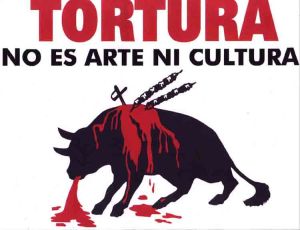Greg Salido Quimpo
To  a first-timer, or a non-Filipino, who discovers that dogs in the Philippines are slaughtered and sold for human consumption they probably think the country lacks regulations on animal welfare. Although only small groups of Filipinos eat dogs, an estimated less than 1% of the 98.3 million of the whole population, there is already an existing law on the treatment of animals in 1998 (RA 8485). In fact, its capital city, Manila, prohibits the killing and selling of dog meat earlier than 1982 (MMC ORD 82-02).
a first-timer, or a non-Filipino, who discovers that dogs in the Philippines are slaughtered and sold for human consumption they probably think the country lacks regulations on animal welfare. Although only small groups of Filipinos eat dogs, an estimated less than 1% of the 98.3 million of the whole population, there is already an existing law on the treatment of animals in 1998 (RA 8485). In fact, its capital city, Manila, prohibits the killing and selling of dog meat earlier than 1982 (MMC ORD 82-02).
There is an exemption in the Philippine Animal Welfare Act of 1998 that says dogs can be slaughtered over a ritual sanctioned by its local leaders, Section 6, Paragraph 1 of the act says,
When it is done as part of the religious rituals of an established religion or sect or a ritual required by tribal or ethnic custom of indigenous cultural communities; however, leaders shall keep records in cooperation with the Committee on Animal Welfare.
In the Cordillera highlands, a family dog is viewed to have the purest spirit and once offered to the gods – slaughtered and eaten by each family member – will protect a family from further bad luck. As explained in an online article by Dr. Nestor Castro, cultural anthropologist and chairman of the University of the Philippines’ (UP) Department,
“It has become a market (dog meat eating), and has really transformed from its original roots,” he said, emphasizing that not all Filipinos eat dog meat and that it’s an inaccurate stereotype to say otherwise. Mr. Castro added that originally dog meat was used as food for certain type of rituals and special occasions. Locals in the Cordillera Region of Northern Luzon, he noted, slaughtered dogs only for ritual occasions. “Generally all animals there, not just limited dogs, are sacrificial animals. Chickens, pigs, or carabaos are butchered, whether for someone who died or for a celebration. The dog goes into that picture, as a special occasion food.” He added that the offering of one’s own could be the ultimate symbol sacrifice. “I would say, if you treat your dog as your best friend, therefore, to sacrifice your best friend must be really special.”
Continue reading
Filed under: animal cruelty, animal law | Tagged: animal abuse, animal law, animal welfare, dog abuse, dog meat, Filipino animal law | 1 Comment »



 However, the Feast of San Fermin is included in a much broad concept of celebration called encierro (bull’s confination), which is widely celebrated all around the country in almost all the villages of Spain. While in the encierro there is not any physical harm to the bulls, later those bulls can be used in the corridas (Bullfighting event) of that village or, as some of the bravest (and most dangerous) bulls, can be used in other encierros of other villages,
However, the Feast of San Fermin is included in a much broad concept of celebration called encierro (bull’s confination), which is widely celebrated all around the country in almost all the villages of Spain. While in the encierro there is not any physical harm to the bulls, later those bulls can be used in the corridas (Bullfighting event) of that village or, as some of the bravest (and most dangerous) bulls, can be used in other encierros of other villages,